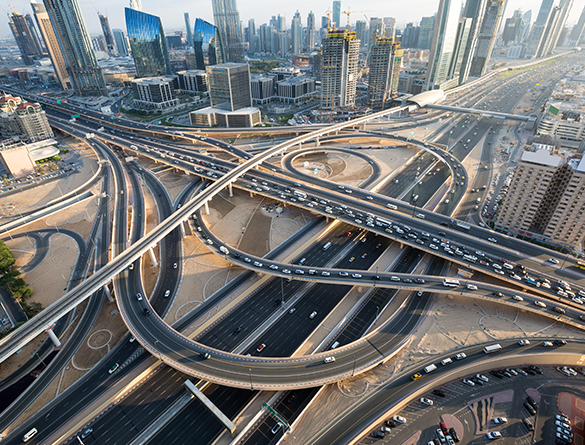Cities are a cornerstone of national economies. They are hubs where people live, visit, play sport, work, learn, heal and create. Just over half of the world’s population live in urban areas today. By 2050 that’s estimated to rise to 70%. Moving people and goods around and between towns and cities is an essential function.
As the population surges, so do our challenges relating to sustainability, inclusivity, congestion and air quality. These all affect people’s quality of life. Automation, electrification and greater connectivity bring opportunities to improve journey times, road safety, accessibility and pollution.
People are central to future transport demands
Better transport and mobility are essential for social cohesion and improving people’s health and lifestyle. New transport technology will change the way people travel and exchange goods and have a different impact on the world around them. Every country, city, town and workplace should have a transport system that’s safe, accessible and inclusive for everyone.
The key is to focus on people. Understanding their travel behaviour and how they interact with technology helps us to design better and adapt transport systems and the built environment effectively.
Strategic planning, advice and research
How do transport planners, city administrations and governments plan, secure funding and invest, when the future is uncertain? Our experts help cities understand their current and future transport demands, the impact of future technology and mobility services, and how to harness these to deliver safe, inclusive and green transport solutions.
We provide scientific evidence for governments and city authorities. They use it to develop policies and strategies (including business frameworks) that support the development, assessment and safe deployment of transport innovation for citizens. This includes impartial assessments of future transport provision. We also help set out business cases and evaluate the impact that new transport will have on safety, modal shift, inclusivity, sustainability, climate change and the environment.
Mobility by design
Transport and mobility solutions should be designed around people, and not the other way round. That means that we need to balance the movement of people and goods in planning, building, operating and maintaining urban areas. We take a holistic approach that puts people first as we support transport change for cities. We aim to make transport modes more reliable and less congested, creating safer, greener urban areas that are accessible to all.
We help answer crucial, practical questions for an effective transport future. “If connected and autonomous vehicles become a reality in the next decade, will we need to put parking or charging points within new housing developments?” “If robo-taxis and autonomous pods are the future of transport, will we need parking spaces any more?”
We support mature and emerging cities to understand the impact of larger transport and infrastructure projects and disruptive technologies. We work with them to plan how to incorporate these developments into sustainable, long-term plans.
Tackling air quality and emissions
Our health is shaped by the environment we live in. Urban areas with highly concentrated air pollution have a significant impact. EU targets aim to reduce greenhouse gas emissions progressively up to 2030. But we need collaborative and co-ordinated solutions across sectors and cities to move us towards a global low-carbon economy. Leading the way, the UK set an ambitious clean air strategy in early 2019.
With our monitoring and modelling expertise, TRL helps clients understand and quantify the quality of air within urban areas. We can then identify and deploy effective solutions and countermeasures. Air quality solutions include:
- Strategies, plans and infrastructure improvements to encourage active travel, make public transport a priority and improve traffic flow, including assessment and delivery of Clean Air Zones.
- Delivery and optimisation of TRL’s world leading urban traffic management system (SCOOT®)
- Strategies and policies to increase and encourage the uptake of low emission vehicles
- Freight management and delivery solutions to reduce the movement of goods within cities and encourage best practice
Urban traffic management
Transport connects people and places. It brings city centres and outskirts together, creating economic growth and increasing employment opportunities. But this can create traffic congestion. With an increasing population, cities and towns need to harness emerging technologies to improve traffic flow, journey times and road safety.
TRL’s extensive road accident data sets, algorithms and expertise help clients to optimise transport utilisation, identify trends and deliver real time benefits. Our services include:
- Traffic modelling and audits
- Junction and signal design and traffic control
- Road signage and layout
- Construction logistics (delivery service plans) and road work plans
- Road safety audits using iRAP and iMAAP
- Infrastructure asset management tool
Relevant projects:
- Bus Safety standard
- Grenfell Tower case study
- CVEI
- Active travel demand
- Community corners
- Mental health and transport

